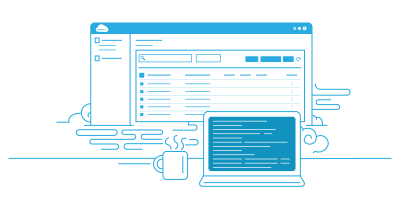One of the top challenges for AWS S3 administrators is monitoring S3 usage growth. The combination of distributed architecture, incremental growth, reporting complexity, and changing access patterns can give IT departments anxiety as costs rise and security risks emerge. As a core cloud building block, S3 usage spans multiple buckets across many accounts, apps, and users. Usage typically grows slowly over time, avoiding notice. Many tools are needed for usage visibility, and spiky or shifting access trends are hard to baseline. Careful monitoring is crucial.
Why Amazon S3 Usage Monitoring Matters
Uncontrolled S3 growth can lead to…
- Unexpected costs: Gradual growth adds up, frustrating management.
- Infrastructure constraints: Unchecked usage can exceed capacity, which can impact performance.
- Compliance risks: Growth of sensitive data requires tighter controls.
- Security vulnerabilities: More users and data necessitate additional safeguards.
- Limited insights: Lack of visibility into usage drivers hinders optimization.
How S3 Administrators Can Monitor Usage Growth
- Enable S3 storage metrics: Set up CloudWatch dashboards to visualize the StorageUsed and NumberOfObjects metrics. Set alarms on thresholds.
- Build analytics dashboards: Ingest logs and metrics into QuickSight or Datadog. Show growth rates and historical trends.
- Tag buckets: As we mentioned before, require tags like department, environment, or project. Segment usage based on tag values to monitor growth areas.
- Analyze access logs: Parse logs to identify spikes in traffic by API calls or users. Chart growth over time.
- Query Cost Explorer: Generate custom reports on S3 usage types to find growth drivers. Add the results to dashboards.
- Configure inventory reports: Schedule daily or weekly inventory CSVs for all S3 buckets. Add these reports to your S3 analytics dashboard and monitor growth trends.
- Use Trusted Advisor: Check the S3 Bucket Permission and Access warnings for increased public access or deletions.
- Set CloudWatch alarms: Create alarms on the BucketSizeBytes metric to alert when buckets exceed limits.
- Monitor API requests: Graph TotalRequest metric from CloudWatch to see increased API activity.
The Impact of Amazon S3 Usage Monitoring
Proper usage monitoring provides early warnings to plan budgets, resources, security controls, and optimizations to support growth. Analytics also provide visibility into usage segments that may warrant new data policies or infrastructure. Though challenging, comprehensive usage monitoring is imperative as your Amazon S3 footprint expands. Ongoing monitoring through dashboards, intelligent alarming, custom analysis, and chargeback reporting provides full visibility into growth trends, allowing informed planning. Automation and analytics are key. Usage often grows incrementally so monitoring tools that identify patterns early are essential to inform resource planning.



Leave A Comment